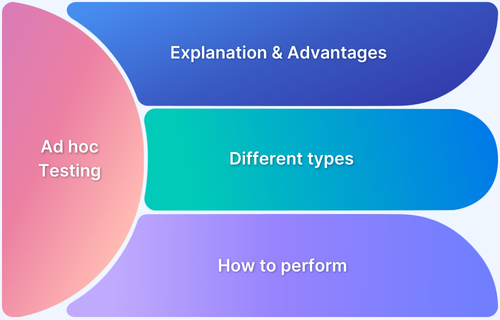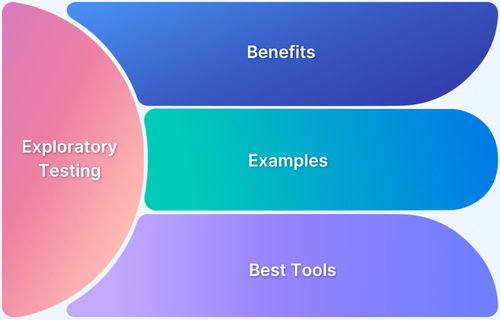Adhoc Testing vs Exploratory Testing
By Mega Geek, Community Contributor - October 18, 2024
While ad hoc testing and exploratory testing might seem similar, they are actually two distinct approaches to uncovering software bugs without following formal test cases.
What is Adhoc Testing?
Ad hoc testing is a software testing method that is carried out without a predetermined set of steps or test plan. Instead, testers find bugs and defects that more formal testing techniques might miss by using their creativity, experience, and intuition.
What is Exploratory Testing?
Exploratory Testing is a software testing method where testers actively explore the software to identify bugs and issues and analyze user experience without relying on predefined test cases.
Testers often document their findings and observations as they navigate the application, which can help refine future testing efforts.
Difference between Adhoc Testing and Exploratory Testing
Ad hoc testing is an informal approach in which tests are performed without prior planning or documentation to find defects quickly, whereas Exploratory testing involves simultaneous learning, test design, and execution, guided by the tester’s knowledge and intuition to uncover issues.
Here are some differences between Ad hoc testing and Exploratory testing.
| Criteria | Adhoc Testing | Exploratory Testing |
|---|---|---|
| Definition | Informal, unstructured testing to find defects without predefined test cases. | More structured testing that involves simultaneous learning, test design, and execution. |
| Test Planning | No formal test planning or documentation is required. | Testers work with charters or objectives, providing a framework for testing. |
| Tester Expertise | Relies heavily on the tester’s familiarity with the system. | Requires the tester to learn and adapt while testing, with more structured guidance. |
| Test Documentation | Minimal to no documentation. | Documentation is created during or after testing to track findings and coverage. |
| Scope of Testing | Limited to surface-level bugs and issues. | Aimed at discovering deeper, more complex issues based on a structured exploration. |
| Approach | Completely unstructured with no predefined guidelines. | Semi-structured, often guided by test charters or testing objectives. |
| Automation | Rarely involves automation. | Can incorporate automated tools to support and enhance manual testing efforts. |
| Goal | Quickly find obvious bugs in a short period of time. | Gain comprehensive insights into the system and uncover both surface-level and deeper issues. |
Testers and developers looking to run ad-hoc tests can integrate BrowserStack, ensuring compatibility across different browsers and devices. This can help them quickly identify issues in real-world conditions without the need for extensive setup.
For exploratory testing, BrowserStack provides access to a real devices cloud platform for exploratory testing to enable real-life conditions rather than relying on emulators or simulators.




